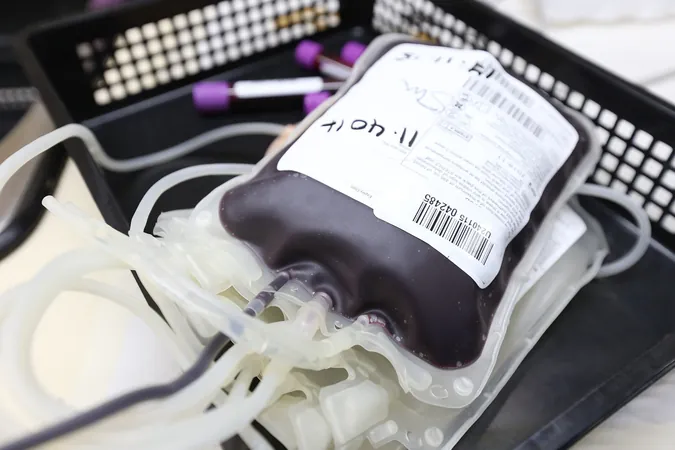
Shocking Gender Disparity: Women Missing Out on Critical Trauma Blood Transfusions
2025-04-11
Author: Nur
A Life-Saving Discrepancy Revealed
A groundbreaking study from the University of Pittsburgh School of Medicine has uncovered a startling truth: women who suffer traumatic injuries are significantly less likely to receive whole blood transfusions within the first critical hours post-injury compared to their male counterparts. This delay in treatment could lead to increased mortality rates for women, despite evidence suggesting that whole blood transfusions can drastically reduce death rates for both genders.
Urgent Call for Change
As the lead researcher Skye Clayton points out, this gender disparity highlights a concerning inequity in medical treatment. "We want medicine to be equitable," she stated. "It’s disappointing to see that women are at a higher risk of missing out on life-saving interventions." The study found that significant blood loss remains the leading cause of preventable trauma-related deaths, with around 30,000 people succumbing each year in the U.S. due to inadequate care.
Research Findings That Demand Attention
Gathering data from nearly 157,000 traumatic injury cases between 2020 and 2022, researchers found that younger women (under 50) received low-titer O whole blood (LTOWB) a staggering 40% less often than similar-age men. For women aged 50 and above, the figure dropped to 20%. Even when accounting for the severity of the injuries, this alarming trend persisted.
The Science Behind the Blood
Whole blood transfusions have been shown to improve survival rates, reducing the risk of mortality by 20-25%. Despite this, women appear to be overlooked in critical moments of trauma care. Researchers speculate that the hesitation may stem from concerns about the potential effects of RhD-positive blood on future pregnancies.
Understanding the Fear
Women who receive RhD-positive blood could theoretically produce antibodies that might complicate future pregnancies. However, with advancements in medical care and a low risk of complications (estimated at just 0.3%), experts argue that this fear is outdated. Spinella emphasized, "You can't have a healthy pregnancy if you're not alive."
Changing Perspectives for Better Outcomes
In related research, Dr. Mark Yazer and his team found that men were nearly twice as likely to receive LTOWB compared to women of child-bearing potential, even though numerous surveys indicated that women would accept RhD-positive transfusions despite potential risks. Yet, clinical protocols often fail to reflect this willingness.
"This research builds on years of advocacy for equitable treatment," Yazer stressed. As awareness of this pressing issue grows, there’s a call to reconsider and recalibrate the risk-benefit equations surrounding blood transfusions for traumatized women, especially when it comes to life-saving interventions during emergencies.
A New Chapter in Trauma Care?
As more institutions reevaluate their policies, recognizing the manageable risks, we may soon see a shift in how women are treated in trauma situations. The aim is clear: to ensure that every patient, regardless of gender, has access to the critical care they need to survive and thrive.


 Brasil (PT)
Brasil (PT)
 Canada (EN)
Canada (EN)
 Chile (ES)
Chile (ES)
 Česko (CS)
Česko (CS)
 대한민국 (KO)
대한민국 (KO)
 España (ES)
España (ES)
 France (FR)
France (FR)
 Hong Kong (EN)
Hong Kong (EN)
 Italia (IT)
Italia (IT)
 日本 (JA)
日本 (JA)
 Magyarország (HU)
Magyarország (HU)
 Norge (NO)
Norge (NO)
 Polska (PL)
Polska (PL)
 Schweiz (DE)
Schweiz (DE)
 Singapore (EN)
Singapore (EN)
 Sverige (SV)
Sverige (SV)
 Suomi (FI)
Suomi (FI)
 Türkiye (TR)
Türkiye (TR)
 الإمارات العربية المتحدة (AR)
الإمارات العربية المتحدة (AR)